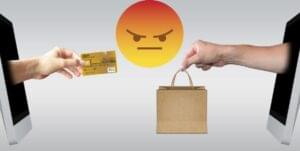It is now obvious that the internet has completely changed how consumers and marketers purchase. But the advent of fast internet and swanky e-commerce sites didn’t merely result in a change in consumer behavior. In fact, people are constantly buying due to the popularity of cellphones and the expansion of WIFI. Think about this At any given time, 84% of Americans are engaged in up to six different types of shopping. Additionally, shoppers claim to consult their smartphones first in almost a quarter of all buying situations.
No matter how great your product or service is, the basic fact is that if a person doesn’t want it or feels they don’t need it, they won’t buy it. And unless you have a clear understanding of what your consumers’ true needs are, you won’t be able to convince anyone that they want or need to purchase what you’re offering. Any successful business, whether it sells products directly to consumers or to other enterprises, is built around knowing and comprehending the needs of the client. If you are aware of this, you can utilize it to convince both current and new clients that doing business with you is in their best interests.
This manual explains what you should know about your clients, how to use this knowledge to market to them more successfully, and how to outcompete your rivals.
1. They require aid
For some people, shopping across so many categories can be intimidating. In other words, they will require as much assistance as they can, giving brands a chance to enter the consideration set at an early stage. Look at ways to make it easier for harried consumers to remember the things they’ve looked into.
Throughout the entire purchasing journey, marketers should constantly make it as simple as they can for customers to conduct their research. That entails being present and helpful while traveling. Look at ways to make it easier for harried consumers to remember the things they’ve looked into. Whether using a smartphone, laptop, app, or digital assistant, half of customers maintain some kind of digital list.
Because consumers are increasingly looking for them, marketers would be wise to create prepopulated lists.
- Over the previous two years, mobile searches for shopping lists have increased by almost 150%. For instance, “shopping lists” for back-to-school, high school, a new puppy, a newborn, an apartment, a whole 30, and a barbecue are all examples of lists.
- Over the past two years, “what to get” mobile searches have increased by over 50%. For instance, “what to get for a 10 year old’s birthday,” “what to get for a new puppy,” “what to get for high school,” and “what to get for back to school.”
2. They are not brand loyal
The fact that most consumers don’t have a strong brand preference during the initial phases of buying is another important difficulty (and opportunity). One of the most striking statistics is that when consumers start their online research via their cellphones, approximately 9 out of 10 are not 100% confident of the brand they want to purchase.
Yet there’s an increasing tendency of customers starting with a blank brand slate. Literally. Over the previous two years, “_ brands” have seen an increase in mobile searches. Some instances:
- +150% for “sock brands”
- Men’s watch manufacturers: +70%
- “best bag manufacturers” +140%
- +150% for “makeup brands”
Retailers and brands should concentrate on assisting consumers in gathering the knowledge they need to make decisions and enabling them to make purchases when and where they want to, whether that means making it simple for them to make purchases online or informing them that the product is in stock at physical locations.
3. They make hasty exits
Fast-loading websites and applications are important, as we’ve already discussed. Nevertheless, speed isn’t the main reason why customers leave. Information that is accessible and pertinent is essential to keeping them. Actually, more than half of smartphone users have made purchases from businesses other than the ones they had originally planned to use because the information offered by those businesses was more beneficial. In a more encouraging vein, 80% of smartphone users are more inclined to make a purchase from businesses whose mobile websites or applications make it simple for consumers to get the answers to their queries.
What can you do to ease the process of purchasing online? We already mentioned lists. Yet, you should also take into account easy measures like letting customers continue where they left off and guaranteeing the check-out procedure is quick and easy. 43 percent of American customers anticipate being able to continue where they left off when visiting a retailer’s website. And 61% anticipate that when they return to a merchant website where they have already made a purchase, their billing and shopping information will be remembered and automatically filled in.
Whatever merchants and brands can do to help customers better keep track of products they may want to purchase later would be well-received by consumers if people are using their cellphones at the very top of the funnel. And who knows? You might be able to lead them all the way through the conversion process.




